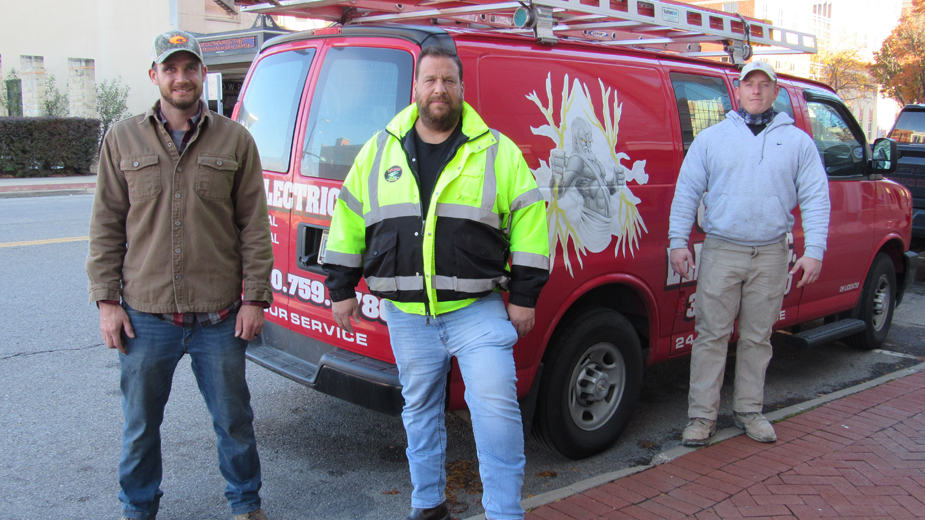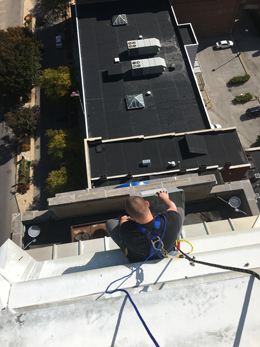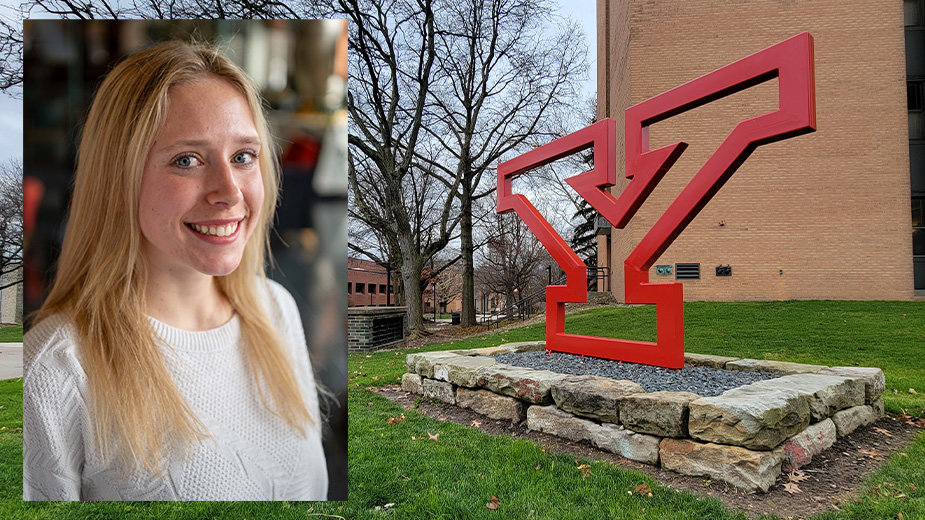Apprenticeship Program Helps Tradesmen Reach New Career Heights
YOUNGSTOWN, Ohio – Eric Klingensmith’s story isn’t unusual. He graduated from high school. He went to college and earned a bachelor’s degree in exercise science from Slippery Rock University. Then, disillusioned with the money he was making after college, he chose a completely different career path.
“I found out that it wasn’t all it was cracked up to be,” Klingensmith, now a fourth-year apprentice with the International Brotherhood of Electrical Workers Local 64 in Youngstown, says of his initial career field. “I started looking into the union trades.”
Klingensmith, now employed at CR Electric Inc., Girard, says he’s well on his way to honing the skills that will propel him through a rewarding career and lifetime.

“I had previously worked construction, which gave me the experience with tools and hands-on work,” he says.
While that experience provided a solid knowledge base, Klingensmith wanted to strengthen his aptitude in a specific area of the business and the electrical trades proved the most inviting.
“The biggest thing toward being a decent apprentice is to come into this with an open mind and be willing to learn because you can learn something every single day,” he says.
Four years into the program, Klingensmith says that he’s become proficient in circuitry, interpreting electrical plans and schematics, and learning to apply these skills on the job.
Recently, Klingensmith was part of a CR Electric crew that installed new LED lights atop the Premier Bank clock tower, a landmark in downtown Youngstown. The project required working at dizzying heights – not a job for a novice, he says.
“You definitely need a mechanical ability to work in this field and over time you can develop that if you put your mind to it,” he says.
Jason Rubin, president of CR Electric, says the apprenticeship program is indispensible for his company and the electricity trades as a whole.
“When you finish this program, you’re pretty much debt free, educated and become a journeyman,” which opens the doors for future opportunities, he says. “It’s a great program to make a good living, great benefits, great retirement. It works well.”
Rubin entered the electricity apprentice program during the late 1980s and just out of high school. “I wasn’t sure about going to college. So I applied for it and got in,” he recalls.
CR Electric is a residential, commercial and industrial contractor, Rubin says. To attain a journeyman’s card that covers commercial and industrial work, apprentices enter a five-year program that requires 8,000 hours of on-the-job training and 900 hours of classroom instruction.
“After five years, I became a journeyman electrician, worked in the field for 10 years, and decided to start my business back in 1998,” Rubin says.
One major benefit is that all apprentices are paid once they enter the program, Rubin says. Apprentices usually start out around $19 per hour, including benefits. Once an apprentice attains journeyman status, he can expect to earn a base wage of about $32 per hour. When benefits and retirement are included, the total package is close to $65 per hour. “It’s a good living,” he says.

CR Electric has played a part in some of the most complex projects in the Mahoning Valley. Among these was the construction of Vallourec’s $1 billion seamless tube mill in 2010 and numerous wastewater treatment plants across the region, Rubin says. More work is expected over the next five years, he says, which will require additional tradesmen groomed through the apprenticeship pipeline.
The company draws its electrical workers from both Local 64 and Local 573 in Warren, Rubin says.
On average, the apprentice program accepts between 10 and 12 applicants per year for commercial work, and another six to eight in the residential program. However the program accepted 20 apprentices this year and CR expects to add 20 more next year. “There’s so much work coming out over the next five, six, seven years,” Rubin says.
CR Electric employs 34 full-time. “Before COVID, we had 50,” he says, noting the pandemic forced the cancellation of several projects.

In 1991, Rubin was part of a team that installed new lamps on the Premier Bank clock tower, then the Home Savings and Loan Co.
The new lamps recently swapped are longer lasting LED fixtures and capable of changing to any color of the spectrum, providing a splash of color to Youngstown’s evening skyline, he says. Similar lamps are planned for the lower tier of the building.
Managing the Premier Bank project was Ken Shaffer, a foreman at CR Electric, who worked closely with Klingensmith as they navigated the heights of the tower to install the new fixtures.
Shaffer is also responsible for 24-hour service calls for the company, where he often must use his skills to troubleshoot and solve emergency problems for customers within a very tight timeframe.
Shaffer earned his journeyman credentials four years ago after completing his apprenticeship.
“I had a lot of friends that went to college and got their degrees and had all these student loans,” he says. “I’ve gone through my apprenticeship and make more than some of them – and I have zero student loans. So, it’s a good program.”
Yet the payback isn’t just financial, Shaffer says.
“I like the satisfaction of taking a project from the planning stages to completion,” he says. “To me, that’s very rewarding.”
Even as a journeyman, Shaffer says he experiences new challenges all the time. “It’s a constant learning process. I enjoy that.”
Pictured: CR Electric staff on the job in downtown Youngstown are foreman Ken Shaffer, President Jason Rubin and IBEW Local 64 Apprentice Eric Klingensmith.
Copyright 2024 The Business Journal, Youngstown, Ohio.


